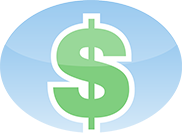
Financial Documents
Financial statements should be prepared and distributed monthly, preferably within ten working days after the close of the prior month and as soon as the cash reconciliation is complete. When statements are prepared less frequently than monthly, and it takes longer than ten days to distribute them, the directors and managers cannot take well thought-out action to correct problems. Rather, decisions will be based on old data, problems may worsen, and valuable time will be lost that could have been used to make corrections. Preparing statements on a continuous or rolling approach also has advantages for the budgeting process. Having monthly reports allows for remarkably accurate and detailed budgets that can be compiled in twelve easy to manage increments rather than a time-consuming annual process.
An organization’s financial documents include (1) a balance sheet; (2) an income statement; (3) a cashflow statement; and (4) a budget. These should provide the directors and the CSO with what they need to effectively control the organization. The statements should compare current financial data with past financial performances. These reports should be understandable to non-accounting people and easy to interpret. In addition, the statements should be brief and not filled with unnecessary details.
The Balance Sheet
Sometimes called the Statement of Financial Position, the balance sheet shows solvency by comparing its assets and liabilities. A balance sheet is a “snap shot” of an organization on a specific day. Most groups publish their balance sheet as of the last day of the year. It describes in accounting terms the monetary value that has been accumulated and the debt that has been incurred over the preceding year. The balance sheet is often prepared with comparative figures of the previous year placed in a column along side the current year’s figures.
| Sample Balance Sheet |
|
| Assets | |
|---|---|
| General Operations Cash | $2,000.00 |
| Reserve Account | 2,000.00 |
| Accounts Receivable | |
| Dues | 5,000.00 |
| Doubtful Dues | (500.00) |
| Publications | 650.00 |
| Pre-Paid Expenses | 1,600.00 |
| Inventory | 650.00 |
| Fixed Assets | 4,000.00 |
| Less: Accumulated | |
| Depreciation | (875.00) |
| Total Assets | $14,500.00 |
| Liabilities | |
| Accounts Payable | $1,600.00 |
| Deferred Income: | |
| Dues | 400.00 |
| Conference | 500.00 |
| Long Term Debt | $10,000.00 |
| TOTAL LIABILITIES | $12,500.00 |
| NET WORTH | $2,000.00 |
The Income Statement
Also called the Statement of Activity, the income statement shows an organization’s profitability by detailing revenues and expenses and is relatively easy to understand. The income statement is the measure of an organization’s financial performance over a period of time, usually one year. The income statement can also be prepared to compare one accounting period with another by adding a column of prior revenues and expenses side by side with the current numbers.
| Sample Income Statement |
|
| January 1 to December 31 |
|
| Revenues | |
|---|---|
| Dues | $10,000.00 |
| Meetings and Registrations | 500.00 |
| Exhibit Booths | 1,000.00 |
| Publication Sales | 565.00 |
| Less: Cost of Goods Sold | (365.00) |
| TOTAL REVENUES | $11.700.00 |
| Expenses | |
| Salaries | $5,000.00 |
| Newsletter Printing | 50.00 |
| Telephone | 200.00 |
| Rent | 1000.00 |
| Supplies | 200.00 |
| Utilities | 350.00 |
| Meeting Room Rent | 10.00 |
| Publication Purchases | 350.00 |
| Depreciation | (875.00) |
| PROFIT (LOSS) | $5,510.00 |
The Cashflow Statement
Knowing the cashflow status is the key to running a successful association. This accounting report monitors carefully the cashflow of the organization. Cashflow is defined as the timing of the amount of money projected to come into the association’s coffers during a month compared to, or matched with, the amount of money to be spent during the same month. The comparison will identify a positive or negative balance by the end of the time period. Not understanding the cashflow situation is the number one reason associations go out of business.
| Sample Cashflow Statement |
|
| January 1 to January 31 |
|
| Cash Balance as of 1/1 | $5,515.00 |
| Cashflow In | |
|---|---|
| Dues | $200.00 |
| Meeting Registrations | 100.00 |
| Exhibit Booths | 0.00 |
| Publications Sales | $50.00 |
| Less: Cost of Goods Sold | (40.00) |
| Total Cashflow In | $310.00 |
| Cashflow Out | |
| Salaries | $500.00 |
| Newsletter Printing | 50.00 |
| Telephone | 50.00 |
| Rent | 84.00 |
| Supplies | 20.00 |
| Utilities | 35.00 |
| Insurance | 0.00 |
| Meeting Room Rent | 5.00 |
| Publication Purchases | 0.00 |
| Total Cashflow Out | $744.00 |
| Cashflow (Positive or Negative) | ($434.00) |
| Cash Balance as of 1/31 | $5,081.00 |
In the event of a negative cashflow position, there are only four options:
1. Revenue will have to be decreased
2. Expenditures will have to reduced
3. Money will have to be taken from reserves
4. Debt will have to be incurred.
Expense Reduction Plan
Money problems are inevitable, but few organizations have plans for facing financial dilemmas. Unexpected expenses from emergencies, or projects “too good to turn down” will cause management to make hasty decisions that may create more problems than are solved. The easiest way to implement a plan to offset over-expenditures is to have a pre-approved list of priorities of expenditures that can be eliminated when necessary.


